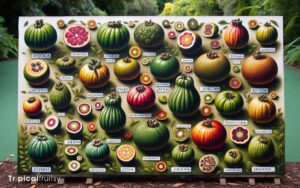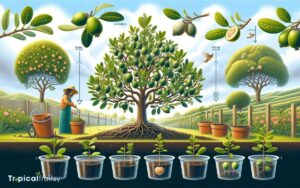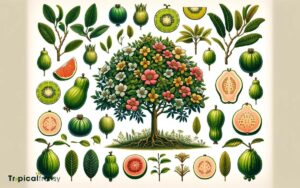How to Make Feijoa Wine? 7 Easy Steps!
Feijoa wine is a delightful, homemade fermented beverage made from the aromatic feijoa fruit. It carries the fruit’s unique flavor profile, blending notes of pineapple, guava, and mint.
The winemaking process for feijoa wine involves crushing the fruit, fermenting with sugar and yeast, and then aging to perfection.
The result is a unique and refreshing wine, perfect for those looking to explore beyond traditional grape wines.
Here are some quick steps:
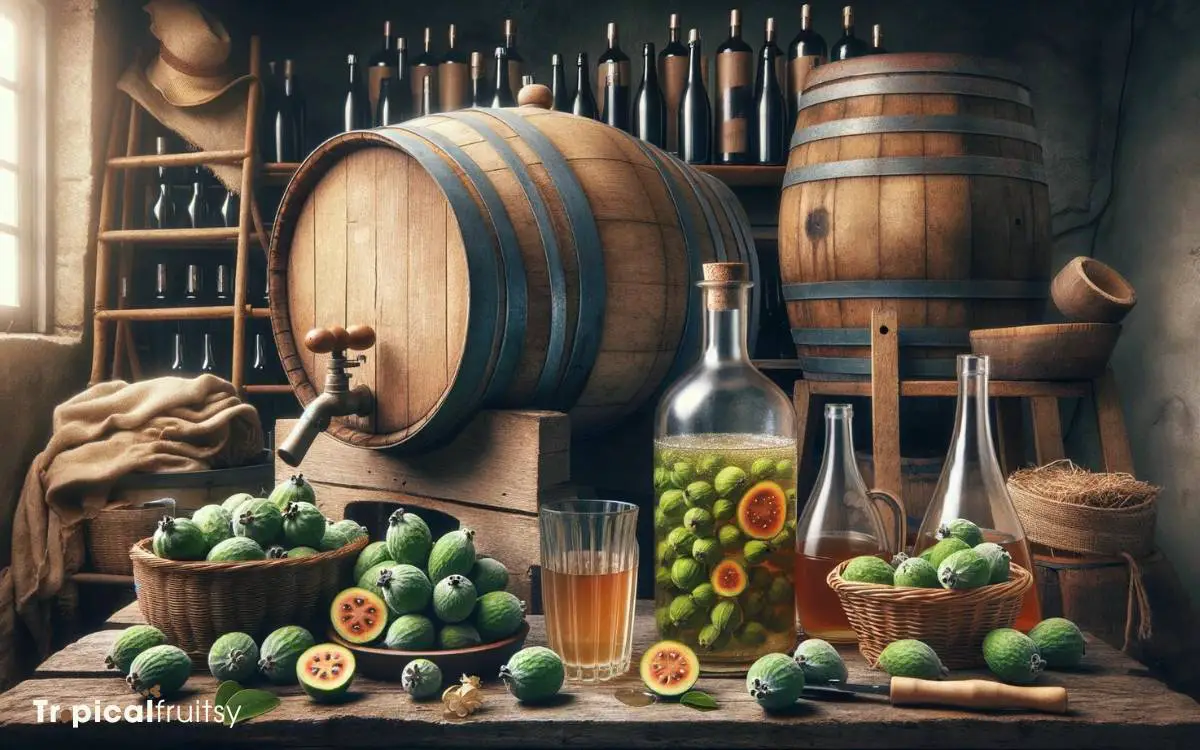
Key Takeaway
Gathering Your Supplies
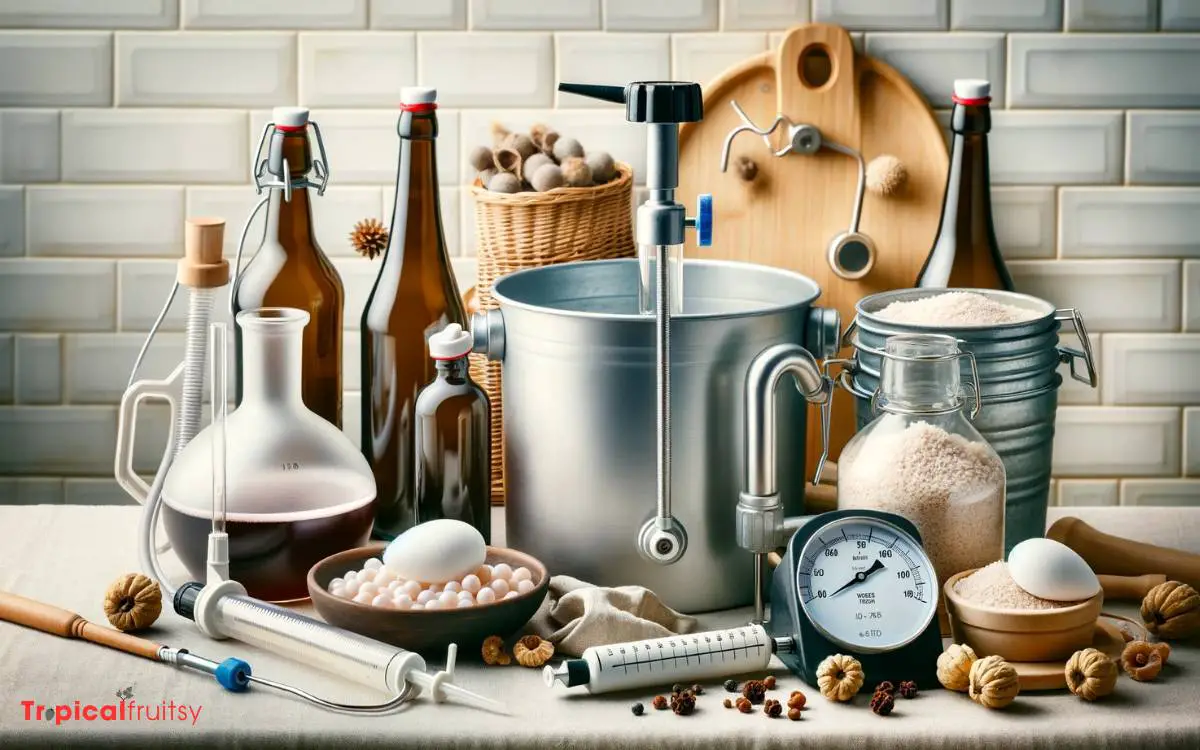
Before you can start brewing, you’ll need several key ingredients and tools to make feijoa wine.
First, procure ripe feijoas; their quality directly influences the wine’s flavor profile.
You’ll also require sugar, water, yeast (wine yeast is preferable for its fermentation properties), and possibly acid blend or tannin to balance the taste.
For the equipment, a primary fermentation vessel, typically a food-grade bucket, is essential. You’ll need a secondary vessel, like a glass carboy, for the aging process.
Airlocks and bungs are necessary to seal the containers, preventing oxidation while allowing gases to escape. A hydrometer will help monitor fermentation progress, ensuring the desired alcohol level.
Step 1: Selecting Quality Feijoas
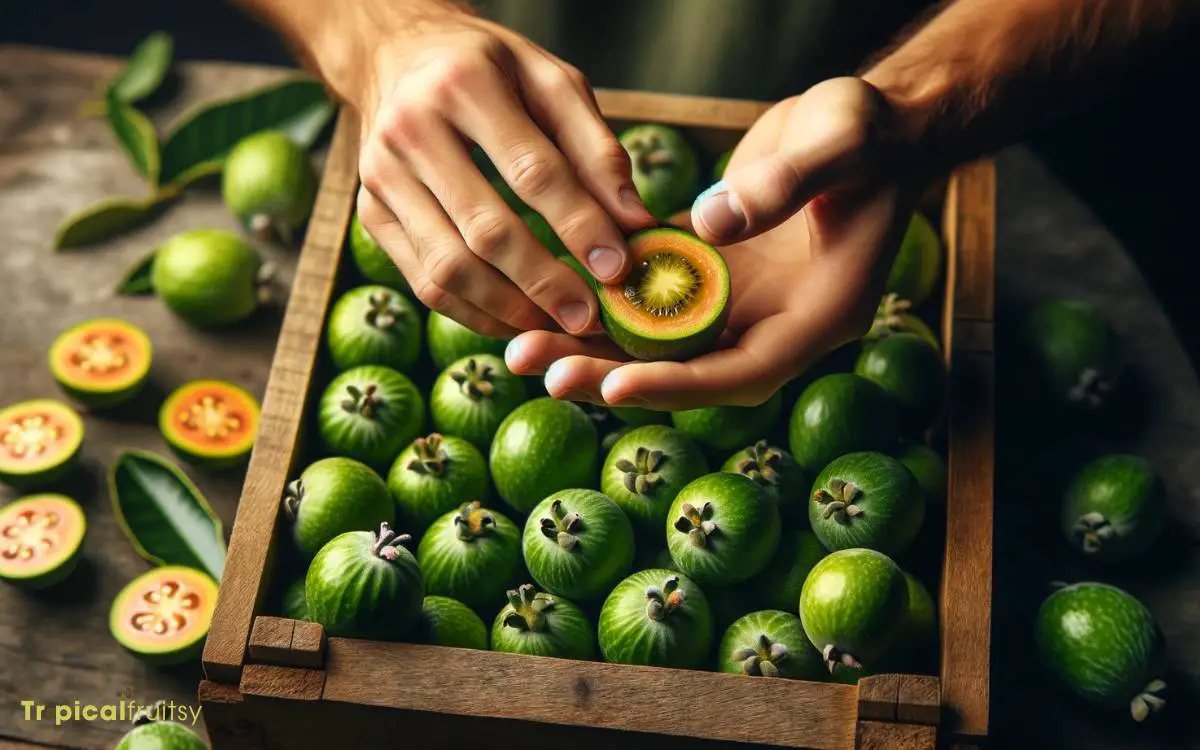
Selecting quality feijoas is critical for producing a wine with the desired flavor profile and aroma. The winemaker must assess the ripeness, ensuring the fruit exhibits a slight give upon gentle pressure and an aromatic fragrance.
They must also meticulously avoid fruits showing any signs of spoilage, such as soft spots or mold, to prevent off-flavors in the final product.
Ripeness Indicators
To ensure the best flavor profile for your feijoa wine, it’s crucial to start with fruit at its peak ripeness. This can be easily identified by its distinctive, aromatic scent and slight give upon gentle pressure.
Selecting quality feijoas involves a meticulous approach, focusing on several key indicators. A strong, sweet-smelling fragrance is a primary indicator of ripeness. The fruit should yield slightly under pressure, indicating softness without being mushy.
Another indicator is the color. Look for a change from green to a slight yellowing, especially near the fruit’s base. Opt for medium to large feijoas that feel heavy for their size. A dried, shriveled stem is often a sign that the feijoa is ripe.
Avoiding Spoilage Signs
Fruit selection’s critical step involves avoiding feijoas that show signs of spoilage, such as soft spots, mold, or an overly fermented smell.
Inspecting each feijoa meticulously ensures that only the finest quality fruit is used, which is pivotal for crafting a wine with the desired flavor profile and stability.
| Quality Indicator | Spoilage Sign |
|---|---|
| Firm to the touch | Soft or mushy spots |
| Clean, intact skin | Bruises or mold |
| Fresh, subtle fragrance | Sour or fermented odor |
| Even coloration | Discolored patches |
Selecting feijoas free of these spoilage signs is essential. It’s not just about the aesthetics; it’s about the integrity and safety of the final product.
Step 2: Preparing the Fruit
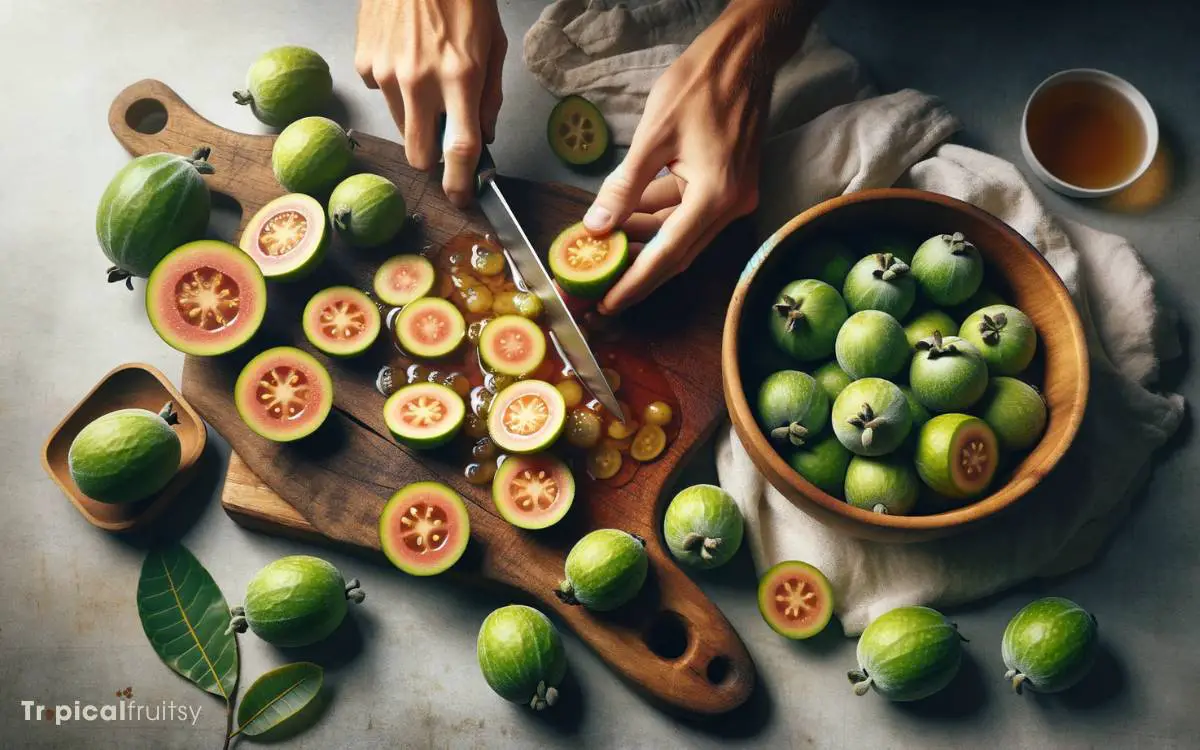
Wash the feijoas thoroughly to remove any dirt or debris before slicing them into quarters. Careful preparation of the fruit is crucial for a quality end product.
Below are the steps to follow:
- Inspect each feijoa: Look for signs of spoilage or pest infestation, discarding any compromised fruit.
- Slice carefully: Use a sharp knife to quarter the feijoas, ensuring uniform pieces for even fermentation.
- Remove the seeds: Extract seeds to prevent any bitter flavors from infiltrating the wine.
- Measure the fruit: Accurately weigh the quarters to determine the amount of sugar needed later.
- Sanitize equipment: Before the fruit touches any surface, ensure all equipment is sterilized to avoid contamination.
With the fruit prepared, it’s time to transition to creating the must, the next critical phase in feijoa wine production.
Step 3: Creating the Must
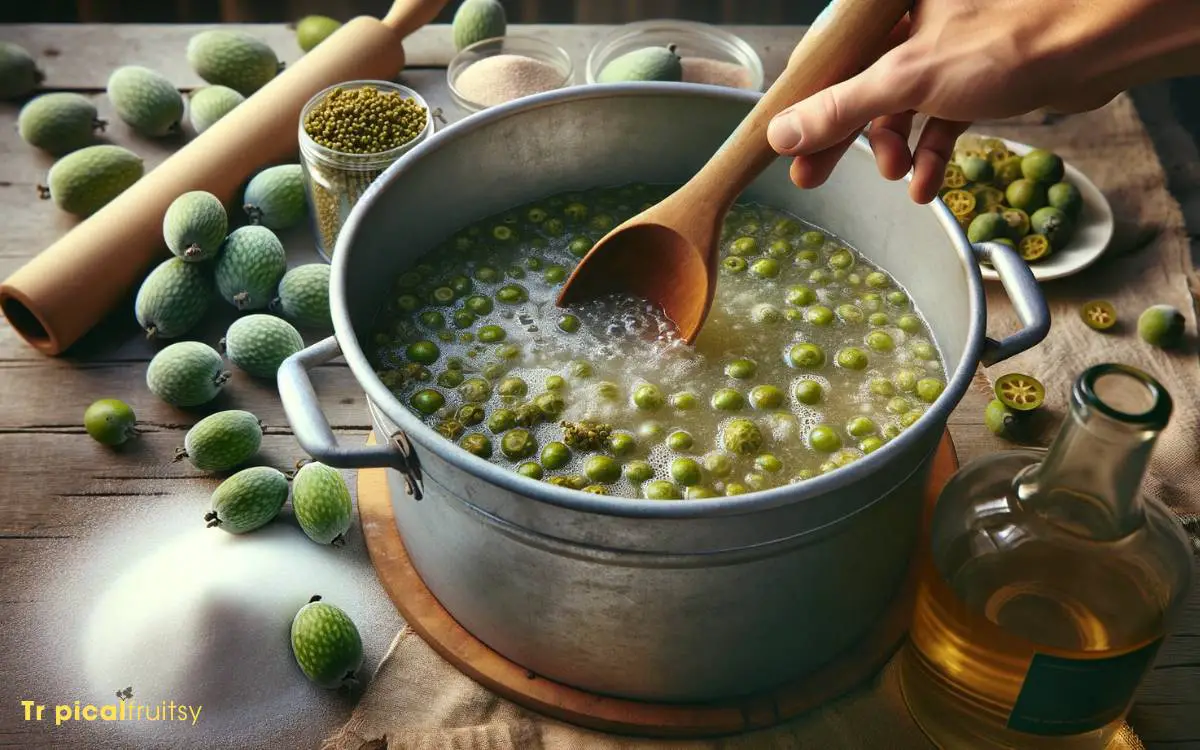
Once the feijoas are prepared, the winemaker focuses on creating the must, the foundation of all wine.
They select only the ripest feijoas, ensuring a high-quality base, and meticulously adjust the sugar content for optimal fermentation. This process sets the stage for the wine’s flavor profile and alcohol content.
Selecting Ripe Feijoas
To create a flavorful must for your feijoa wine, you’ll first need to select a dozen ripe feijoas. The ripeness of the fruit is critical for achieving the right balance of natural sugars and flavors.
Here is a methodical approach to identifying suitable feijoas:
- Check the color: Look for a change from green to a slight yellowish or reddish hue.
- Assess firmness: Gently squeeze the feijoa; it should yield slightly under pressure.
- Inspect the surface: The skin should be blemish-free and exhibit a healthy sheen.
- Smell the fruit: Ripe feijoas emit a strong, sweet, and slightly tart aroma.
- Taste test: If possible, sample a small piece to ensure the fruit is at peak flavor.
With the ripe feijoas selected, the next step is to adjust the sugar content to ensure proper fermentation.
Sugar Content Adjustment
After selecting your ripe feijoas, you’ll need to measure and adjust their sugar content to create a well-balanced must for fermentation.
Begin by crushing the fruit to extract the juice, then use a hydrometer to determine the specific gravity, which indicates the potential alcohol content.
Feijoas naturally have varying sugar levels; therefore, you’ll likely need to add sugar to reach the desired gravity for wine, typically between 1.090 and 1.110.
Carefully dissolve the correct amount of sugar in warm water before combining it with the feijoa juice.
This step ensures uniform sugar distribution without overheating and potentially harming the natural yeast or added wine yeast. Stir the must thoroughly to integrate the sugar solution completely, setting the stage for a successful fermentation process.
Step 4: Initiating Fermentation
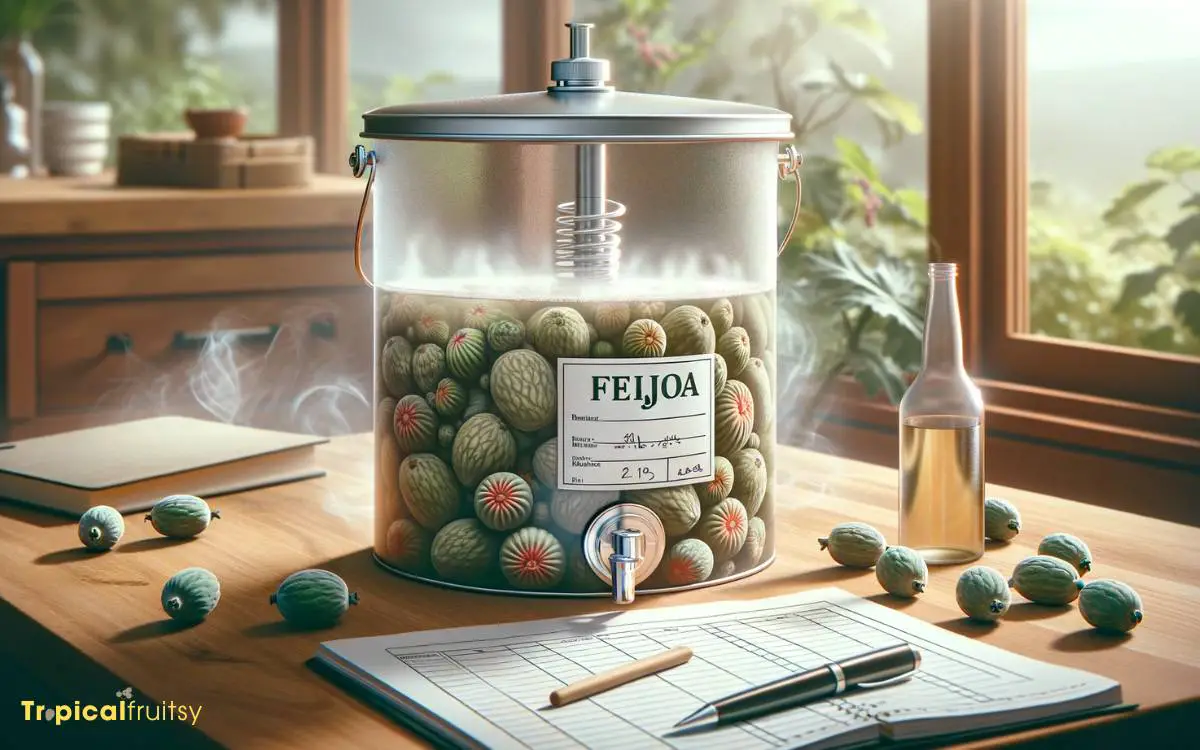
Upon adding yeast to the feijoa juice mixture, fermentation begins, transforming the sugars into alcohol. This step is critical in winemaking, requiring precision and attention to detail.
To ensure a successful fermentation process:
- Sterilize all equipment to prevent contamination.
- Activate the yeast prior to addition, if necessary, following the manufacturer’s instructions.
- Maintain a consistent temperature, ideally between 18-24°C (64-75°F), to optimize yeast activity.
- Monitor the specific gravity daily with a hydrometer to track fermentation progress.
- Aerate the must gently during the initial stages to supply oxygen to the yeast.
The winemaker’s expertise is evident in the methodical approach to initiating fermentation, setting the stage for the complex biochemical reactions that will yield a harmonious feijoa wine.
Step 5: Monitoring the Process
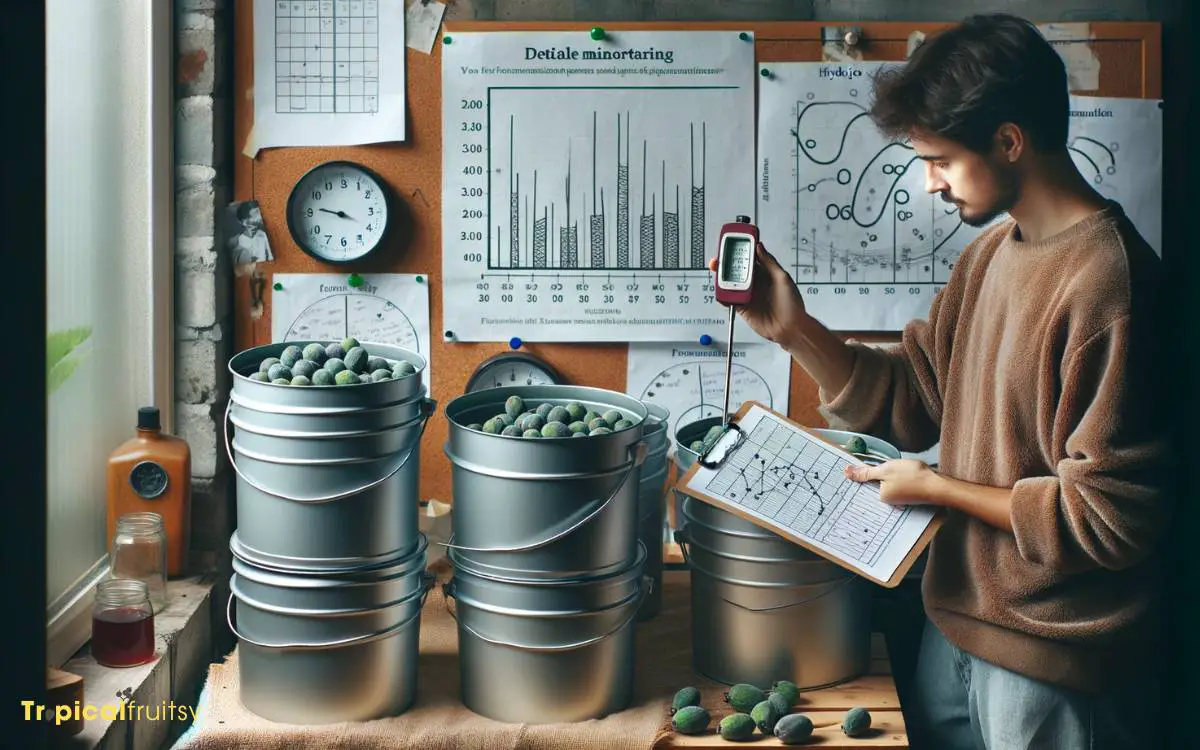
Winemakers must keep an eye on the wine’s development, ensuring the fermentation process continues smoothly and without issues. They’ll meticulously monitor several key parameters: temperature, sugar content, and potential contaminants.
The optimal fermentation temperature for feijoa wine generally ranges between 18°C to 24°C. They’ll use a thermometer to check daily, making adjustments as necessary to maintain this range.
The sugar levels, measured by a hydrometer, provide insight into the fermentation progress and alcohol potential. Readings should gradually decrease as yeasts convert sugars into alcohol and carbon dioxide.
They’ll also closely observe for any signs of unwanted microbial activity—off smells or unusual residues could indicate a problem. It’s crucial they address these promptly to prevent spoilage and ensure a high-quality feijoa wine.
Step 6: Bottling Your Wine
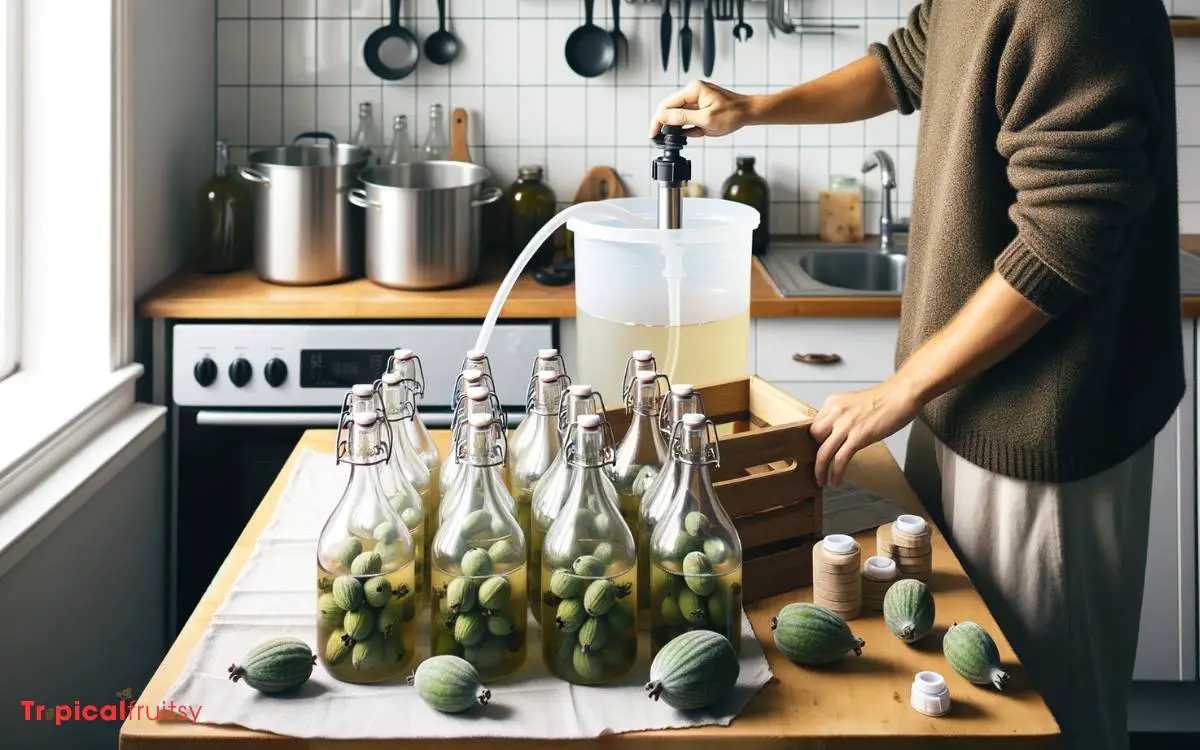
Once the feijoa wine has matured, it’s time to transfer the liquid into bottles for aging and eventual consumption. This stage requires precision and cleanliness to ensure the wine’s quality isn’t compromised.
To bottle feijoa wine methodically, one must:
- Sterilize all bottles and equipment thoroughly to prevent contamination.
- Siphon the wine from the aging vessel, avoiding disturbing the sediment.
- Leave an appropriate headspace to allow for wine expansion.
- Securely fit corks or caps to ensure an airtight seal.
- Label bottles with the bottling date and wine specifics for future reference.
Bottlers must handle the wine gently to maintain its integrity and avoid oxidation. This detailed approach ensures that the feijoa wine will age gracefully, developing its flavors to their fullest potential.
Step 7: Aging and Enjoyment
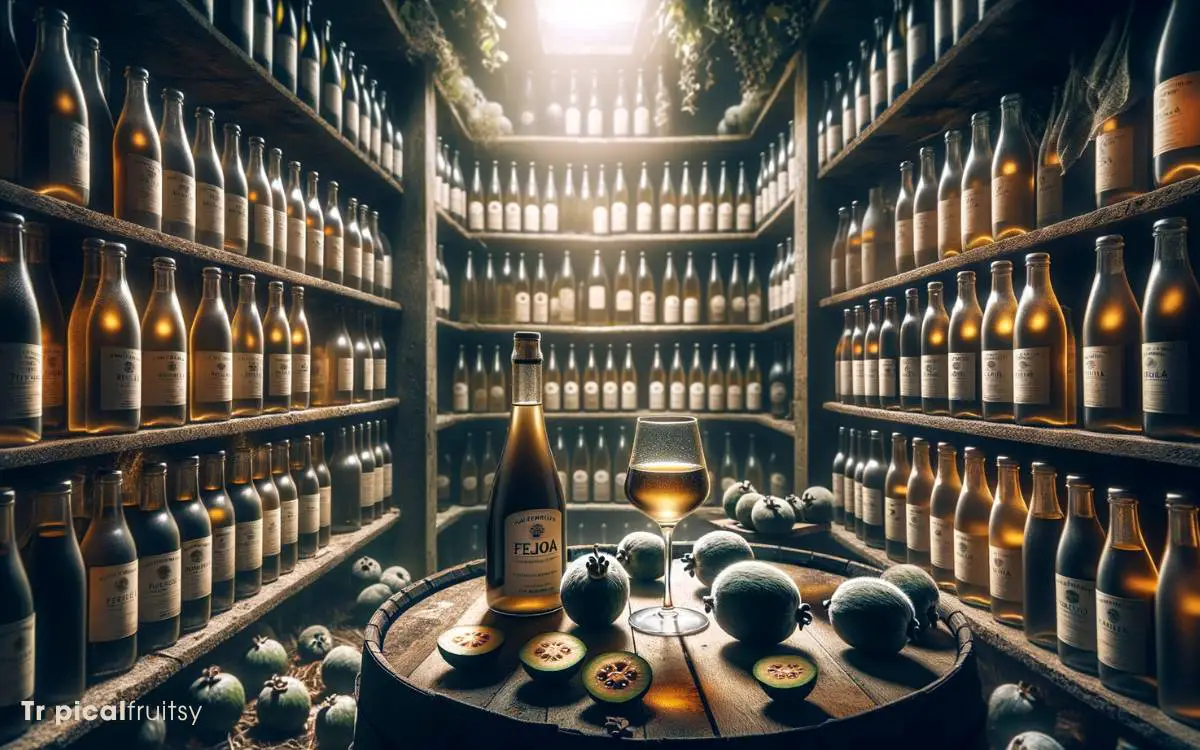
After bottling, the feijoa wine should be stored in a cool, dark place to mature, allowing its unique flavors to develop fully before enjoyment. The optimal aging process for feijoa wine, like other fruit wines, typically spans six months to one year.
This duration isn’t arbitrary; it’s crucial for the amalgamation of the wine’s intrinsic characteristics, promoting a balance between acidity, sweetness, and the aromatic profile that feijoa imparts.
Enthusiasts should monitor the wine periodically, checking for any signs of spoilage or unexpected changes in color or sediment.
Once the aging period concludes, the wine must be evaluated for quality. If the bouquet, taste, and clarity meet the vintner’s standards, it’s then ready for consumption.
Properly aged, feijoa wine offers a refined sensory experience, replete with the fruit’s distinctive tropical notes.
Conclusion
Crafting feijoa wine requires meticulous attention to detail, from selecting the finest fruits to monitoring fermentation. It’s a labor of love that pays off, considering a single homemade batch can save enthusiasts up to 60% compared to store-bought artisan wines.
This statistic not only highlights the economic advantage but also the priceless satisfaction of savoring a personal vintage.
With patience and care, each bottle matures into a unique testament to the winemaker’s dedication.

